brain areas and neurotransmitters
1/19
There's no tags or description
Looks like no tags are added yet.
Name | Mastery | Learn | Test | Matching | Spaced |
|---|
No study sessions yet.
20 Terms
thalamus
switchboard for sensory information
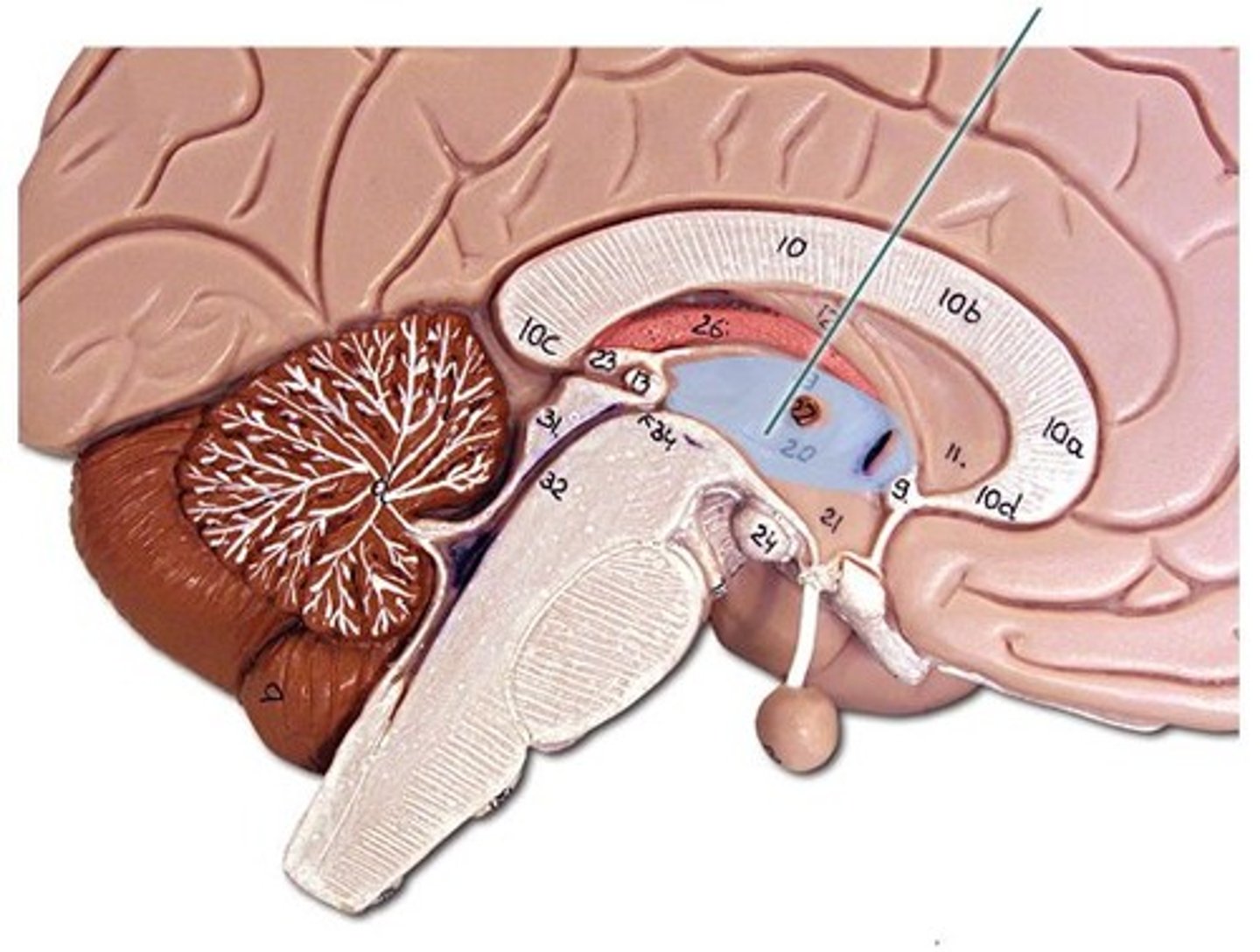
medulla
base of brainstem; controls heartbeat and breathing
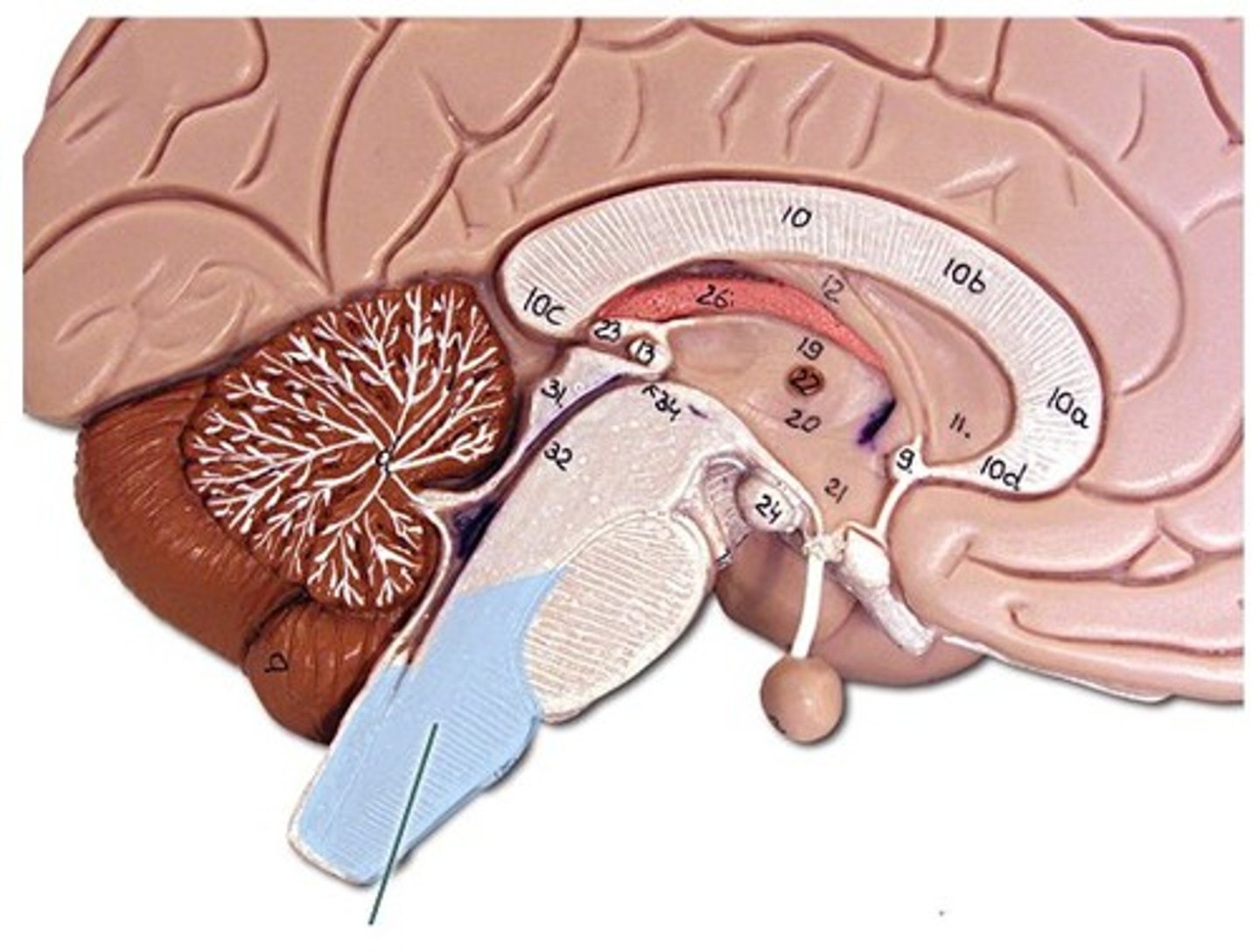
reticular formation
a nerve network in the brainstem that plays an important role in controlling arousal
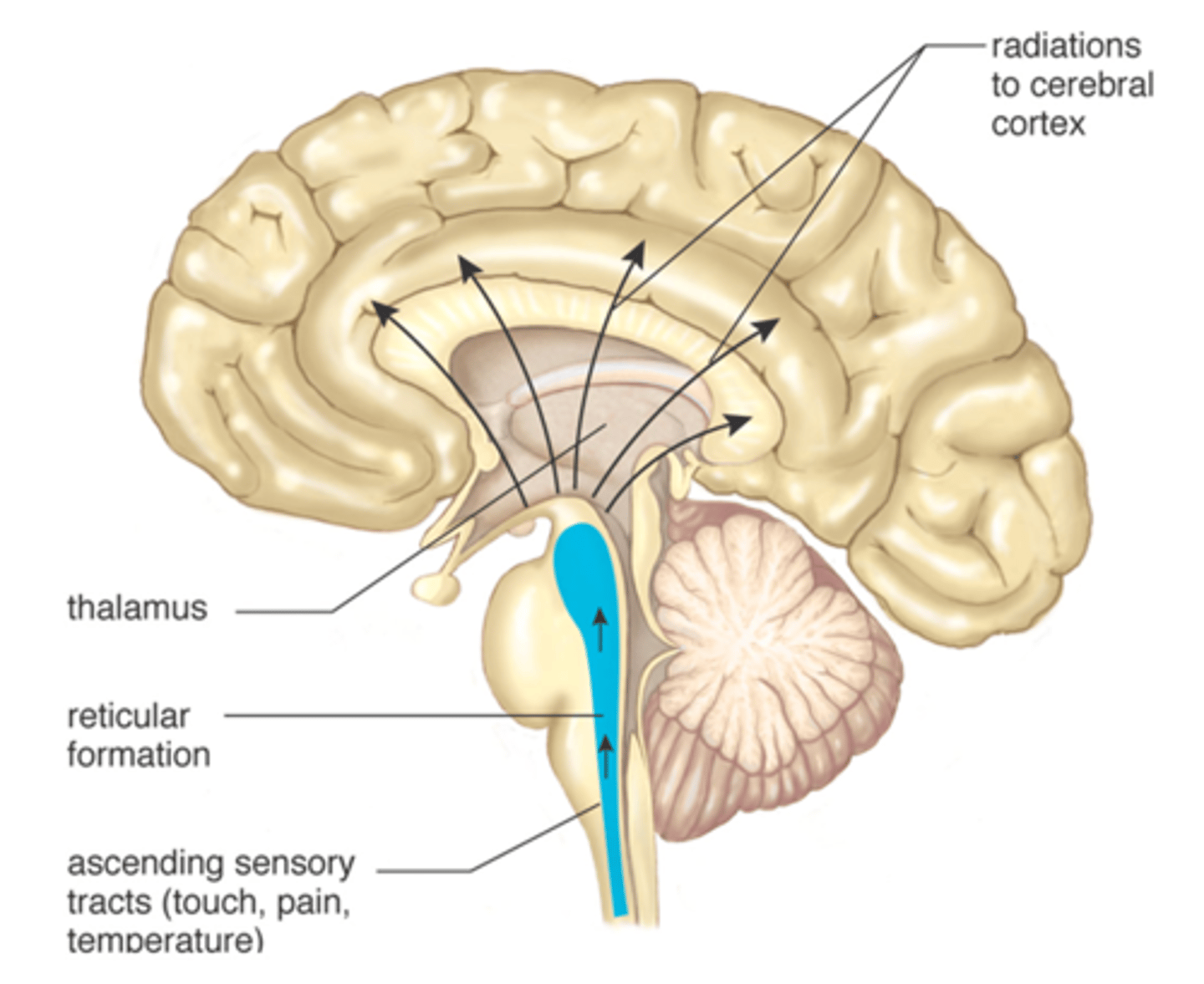
cerebellum
the little brain that processes sensory input and coordinates movement output and balance
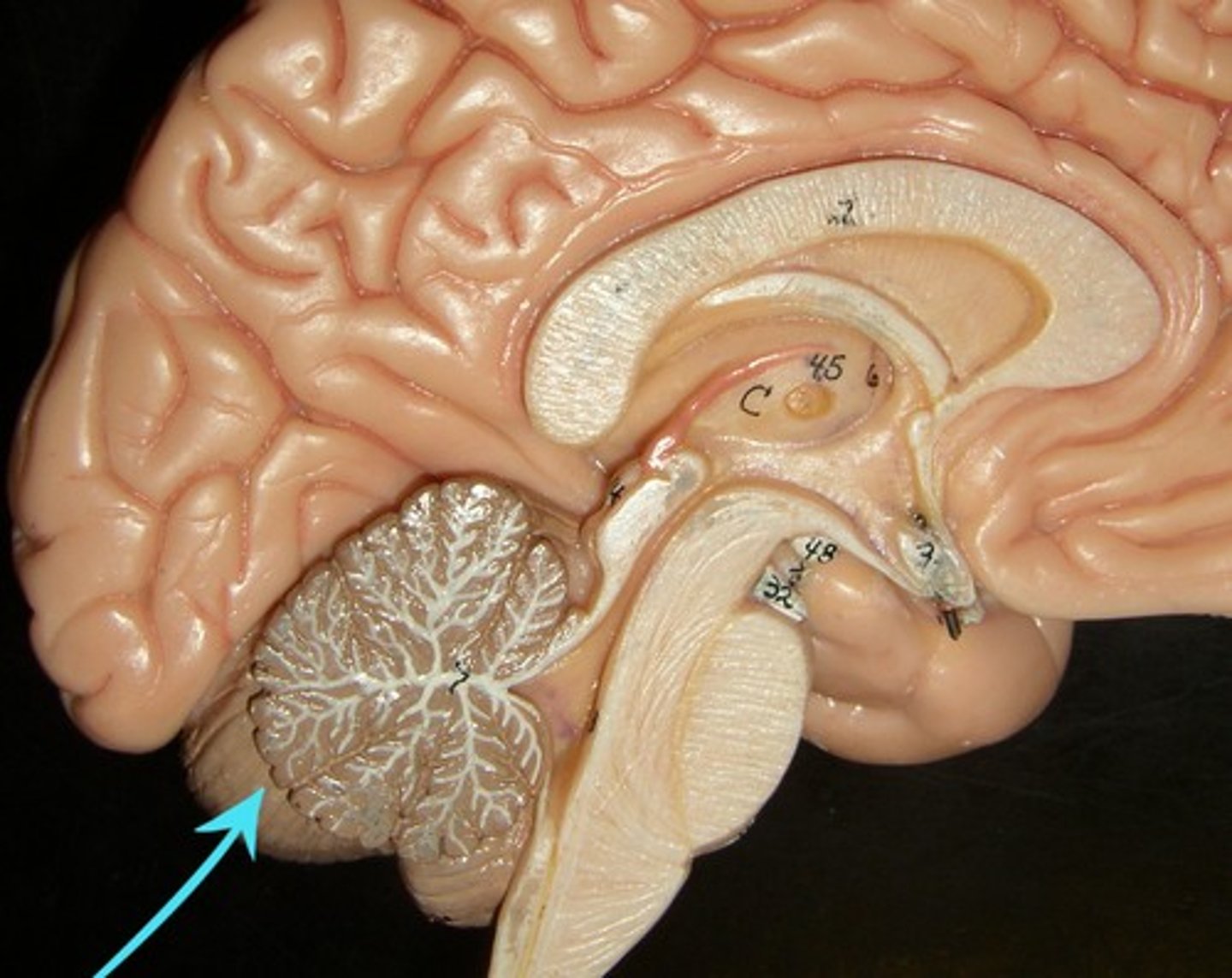
amygdala
almond-shaped cluster in the limbic system; linked to emotion
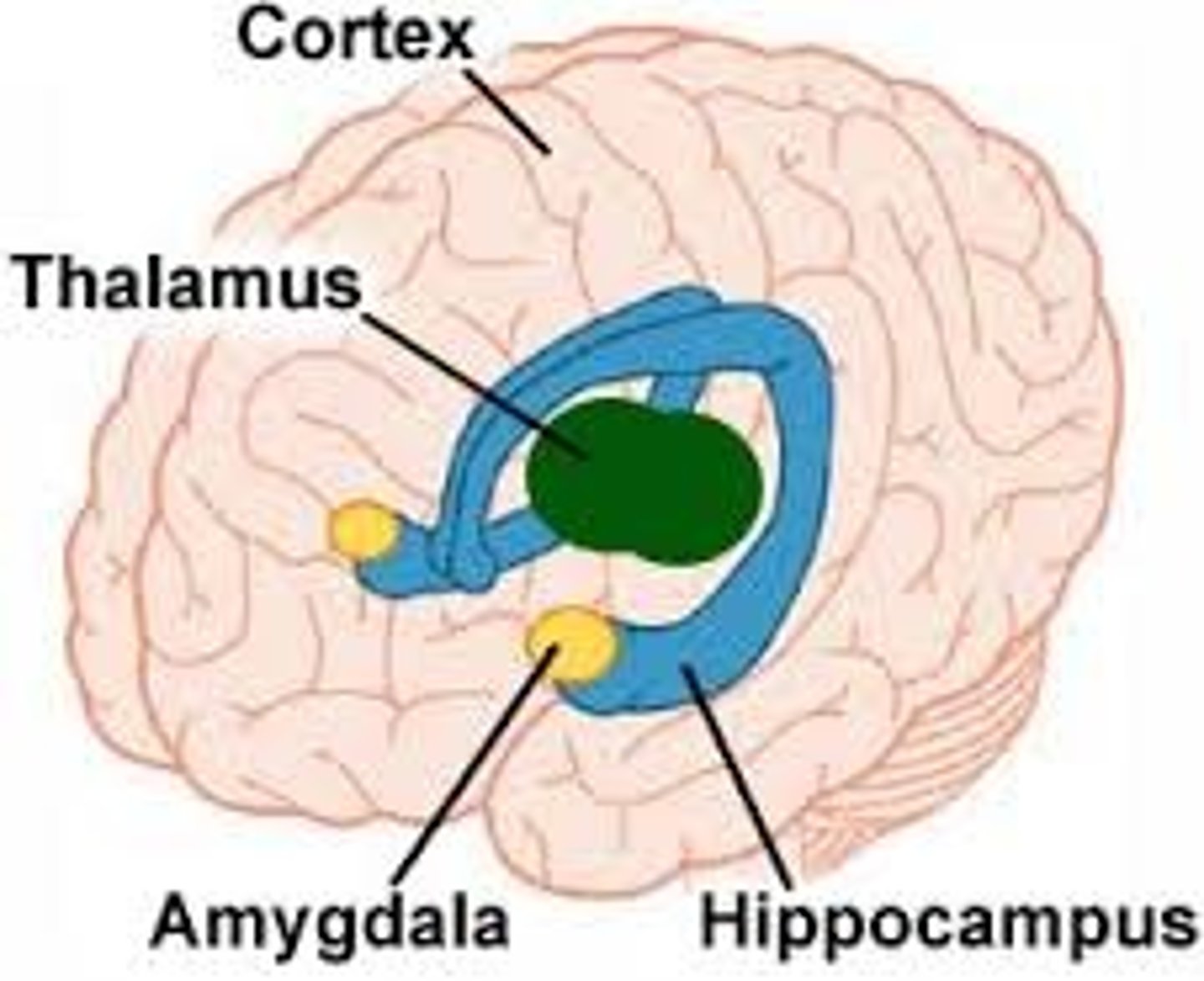
hippocampus
part of the limbic system linked to memory
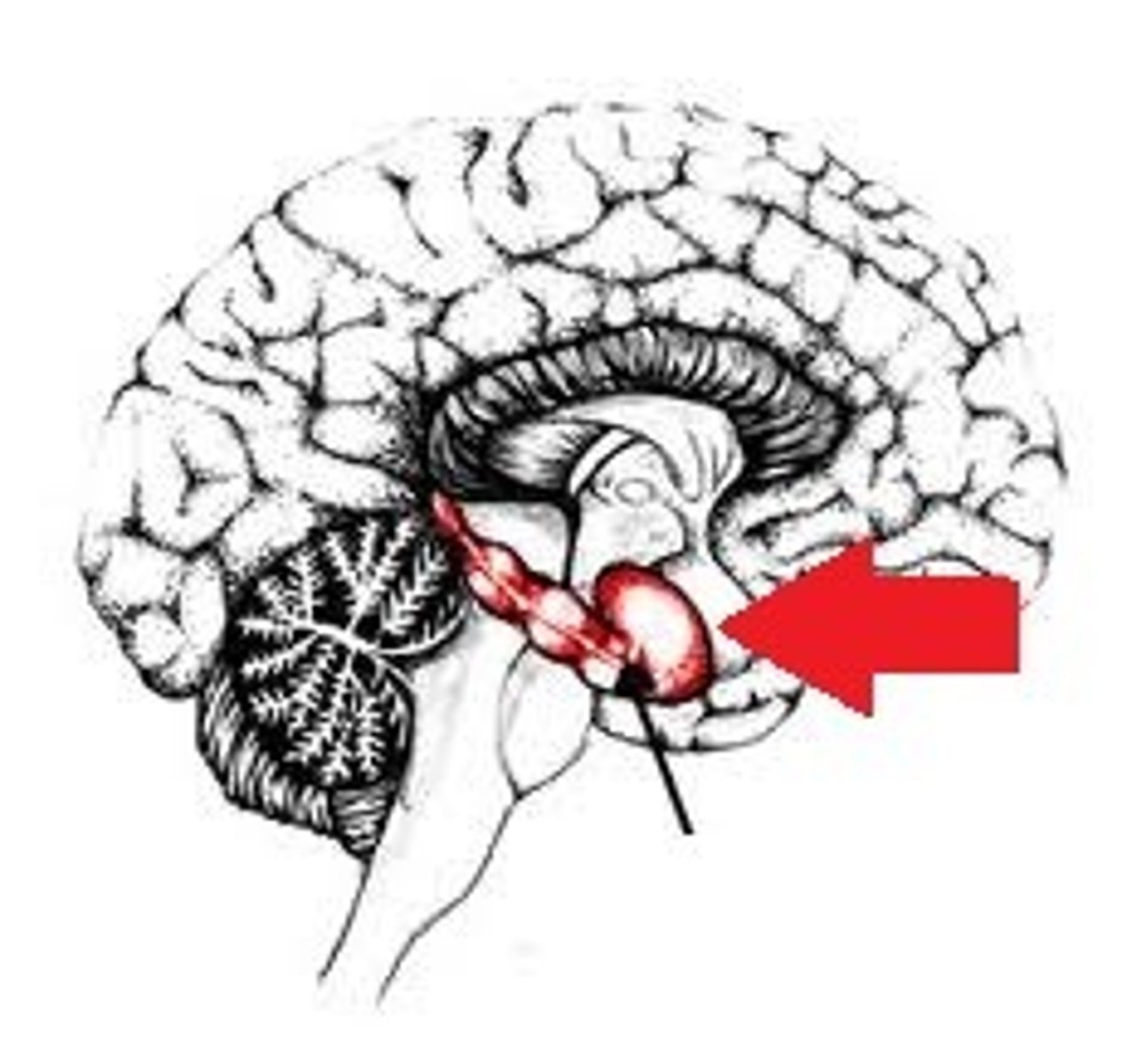
corpus callosum
axon fibers connecting the two cerebral hemispheres
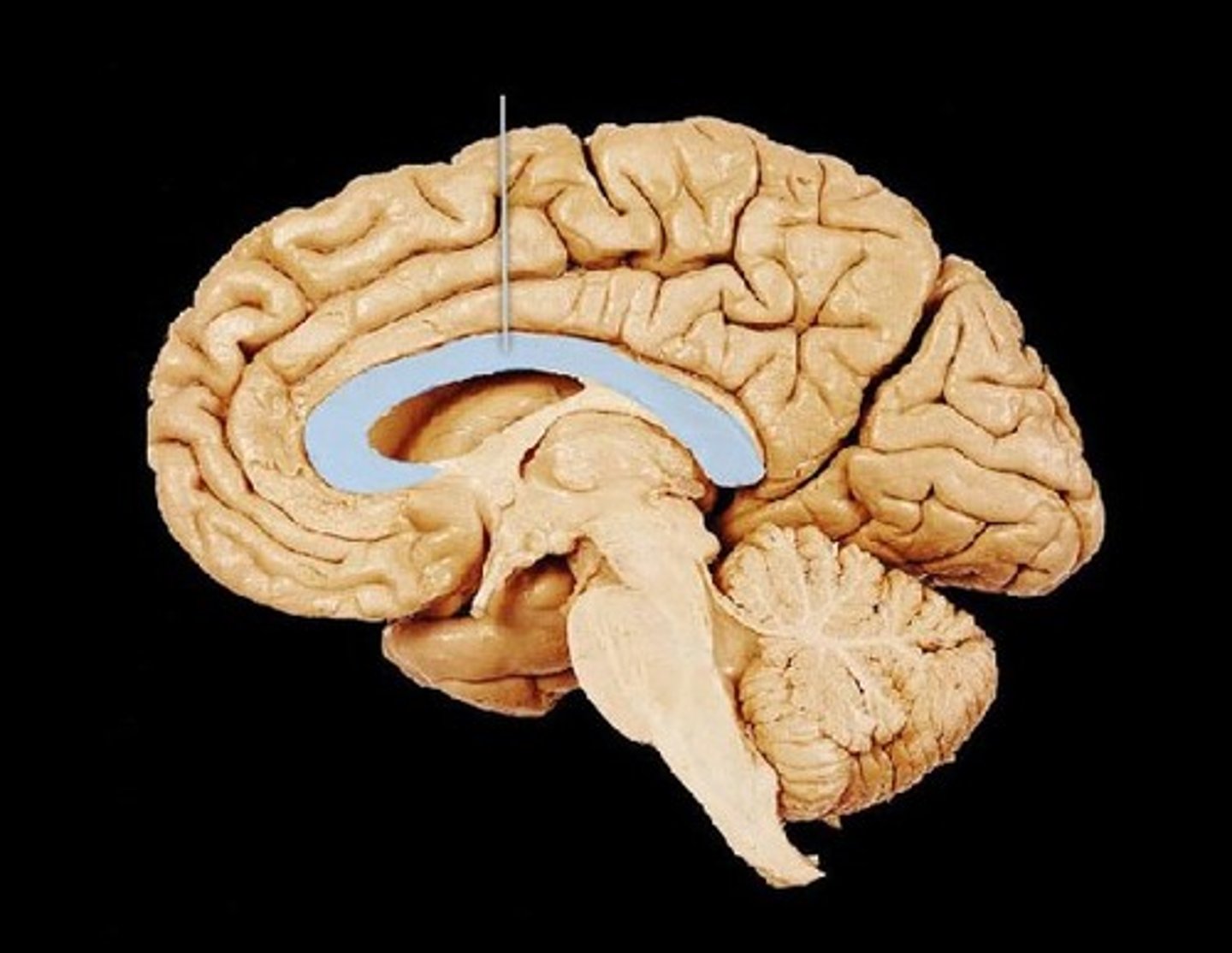
hypothalamus
controls maintenance functions such as eating, thirst, body temp, and sexual behavior
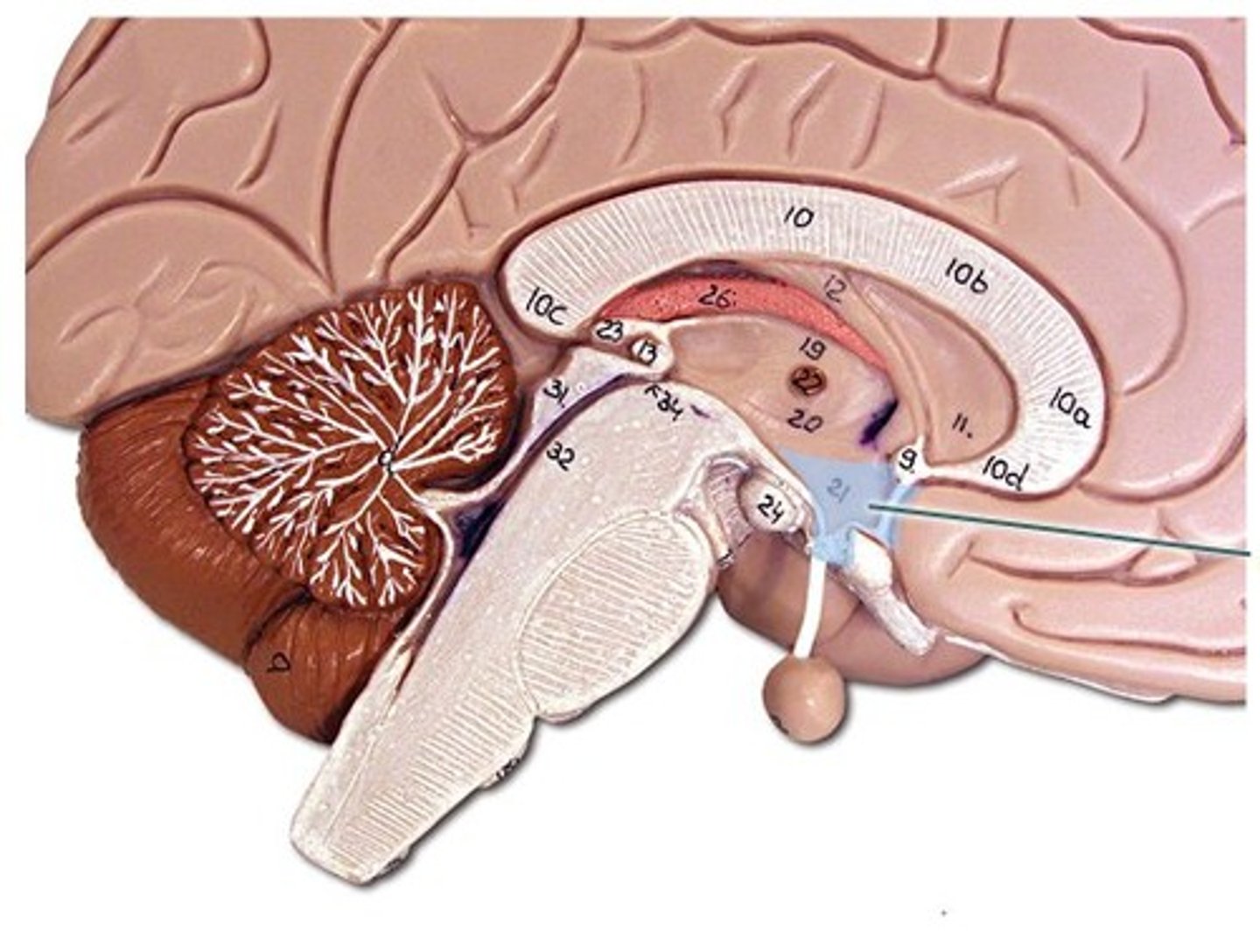
frontal lobe
lies behind the forehead, involved in speaking and muscle movements, and making plans/judgments
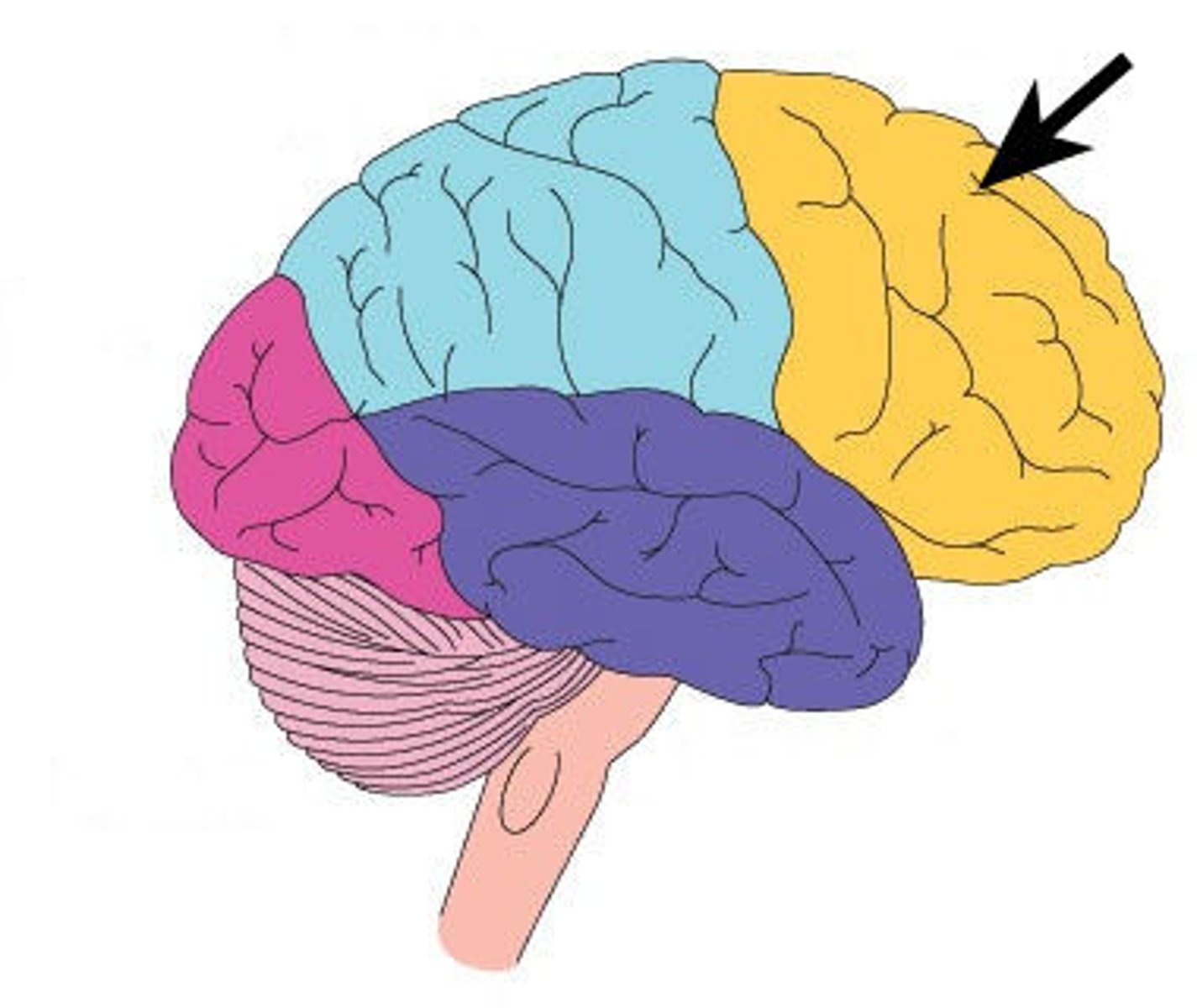
temporal lobe
lies roughly behind the ears, and includes auditory areas
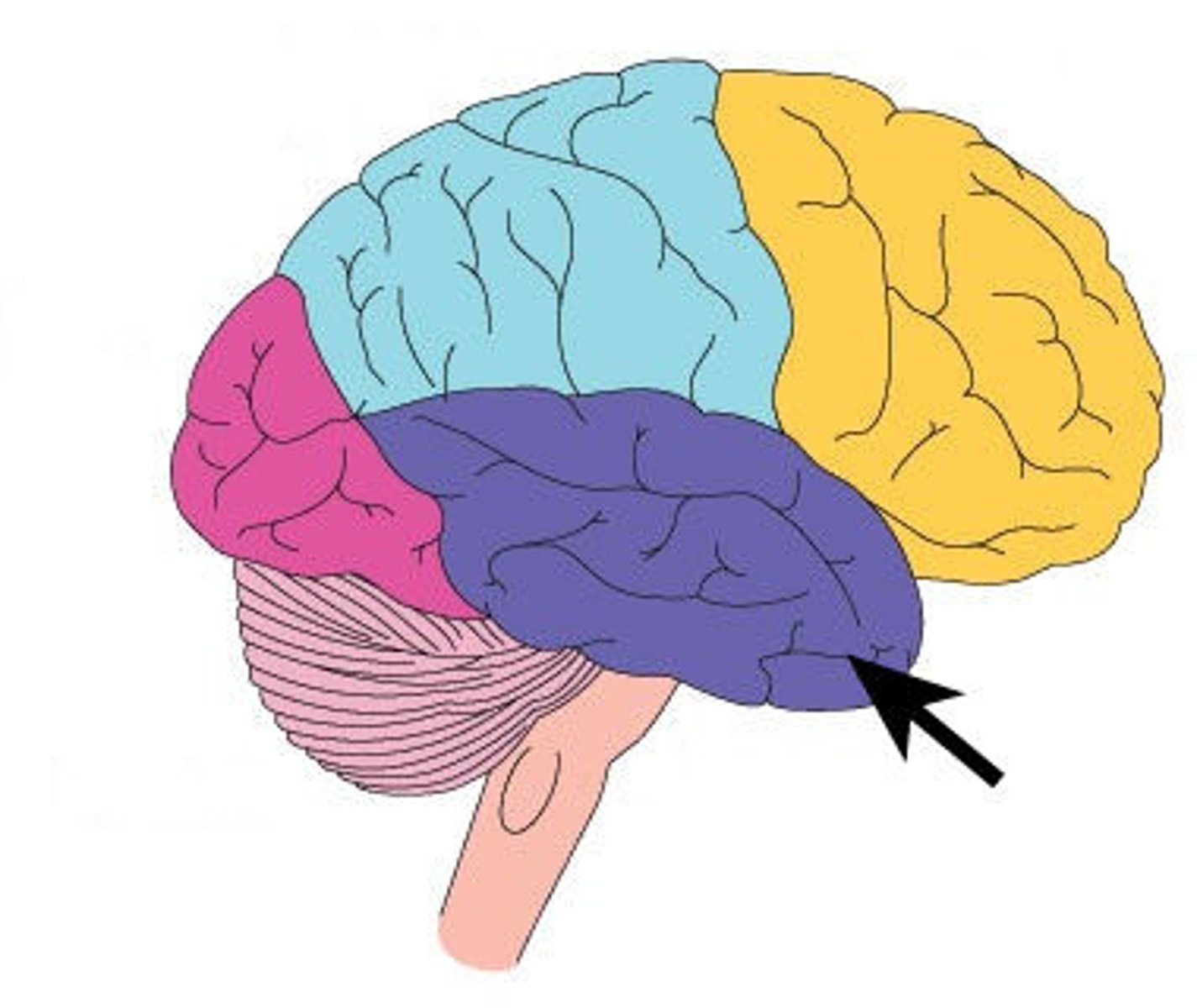
parietal lobes
lies at the top of the head toward the rear; receives sensory input for touch and body position
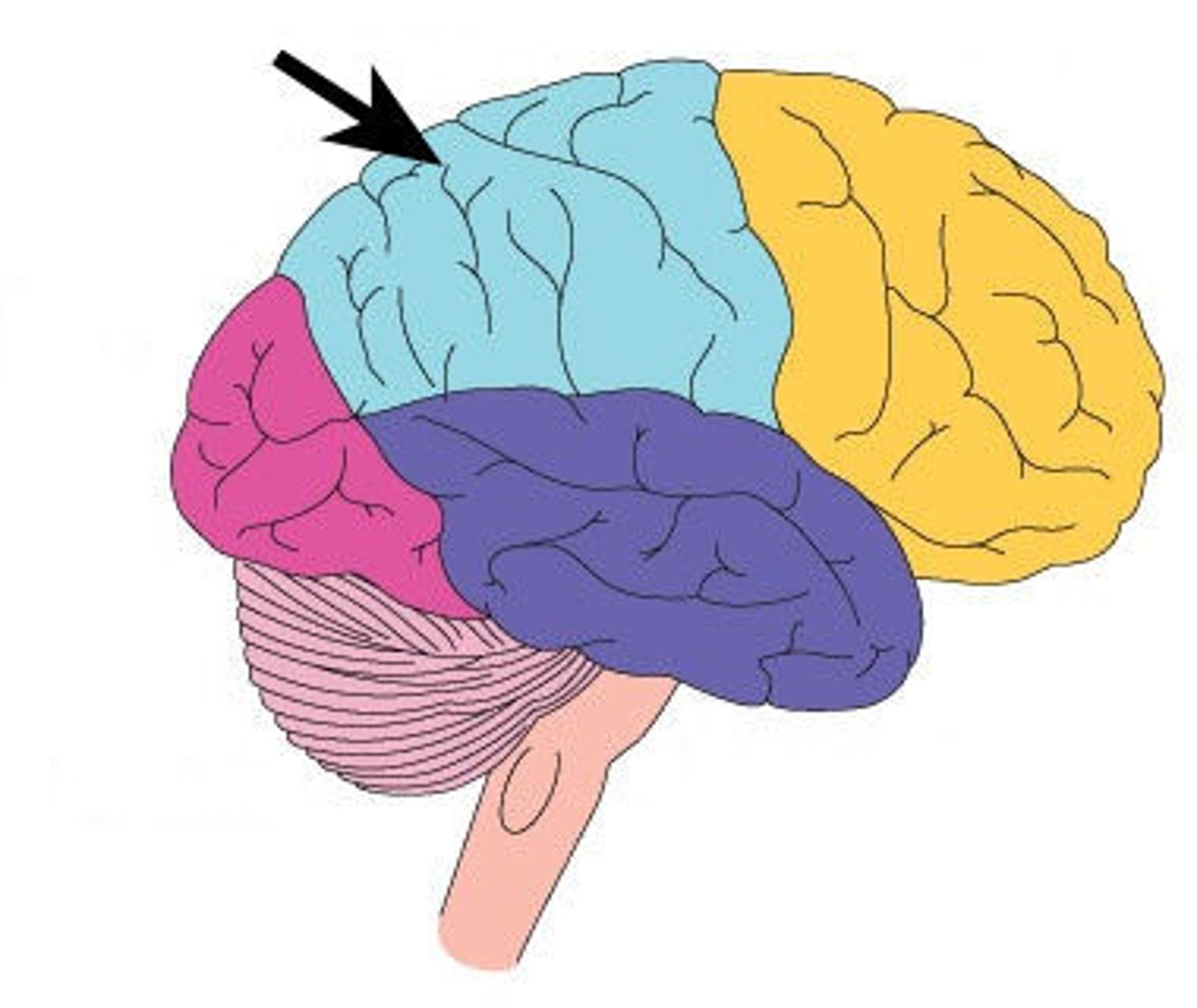
occipital lobes
lies at the back of the head; includes areas that receive information from the visual fields
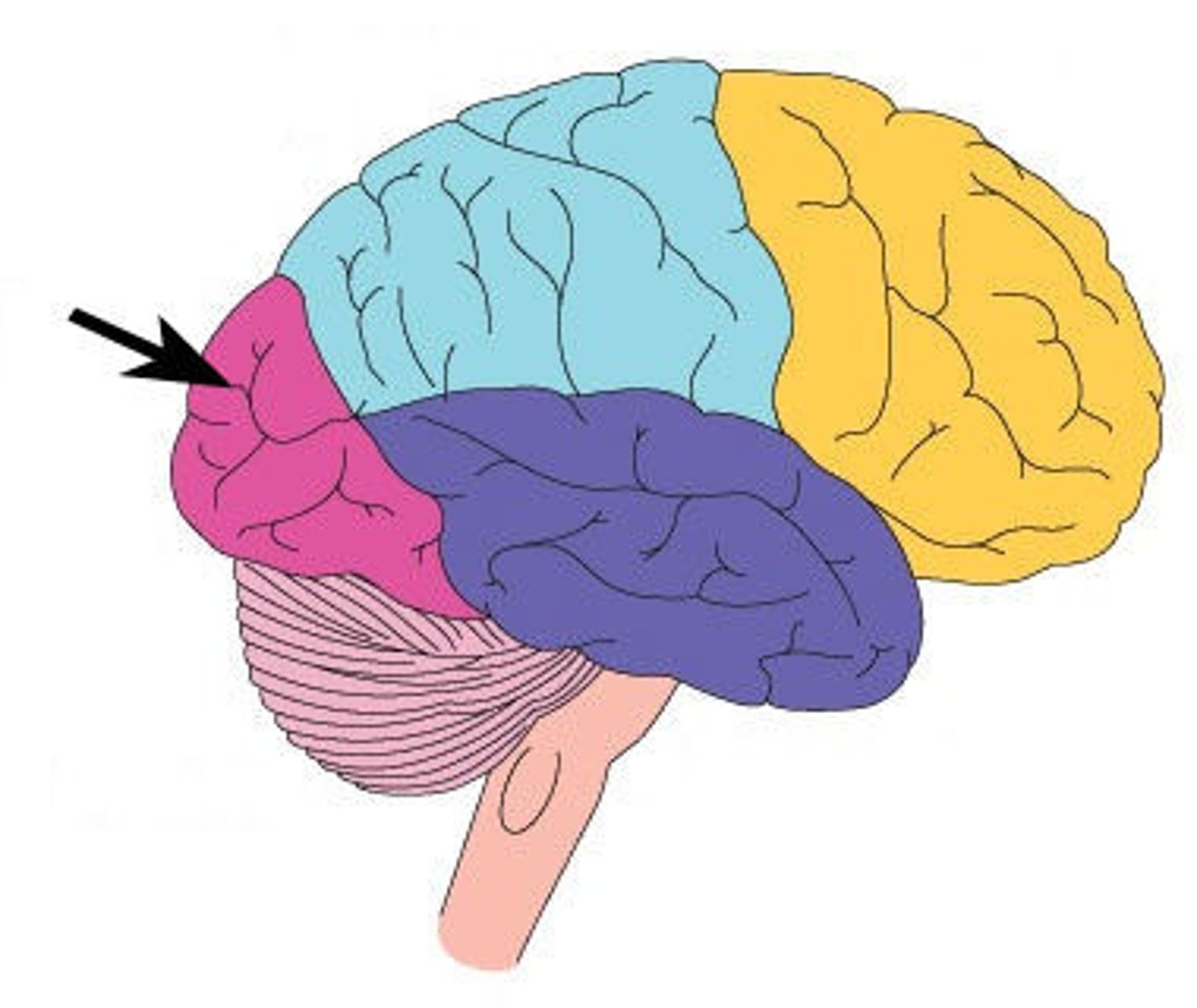
broca's area
produce speech, organizes words, frontal lobe, output system
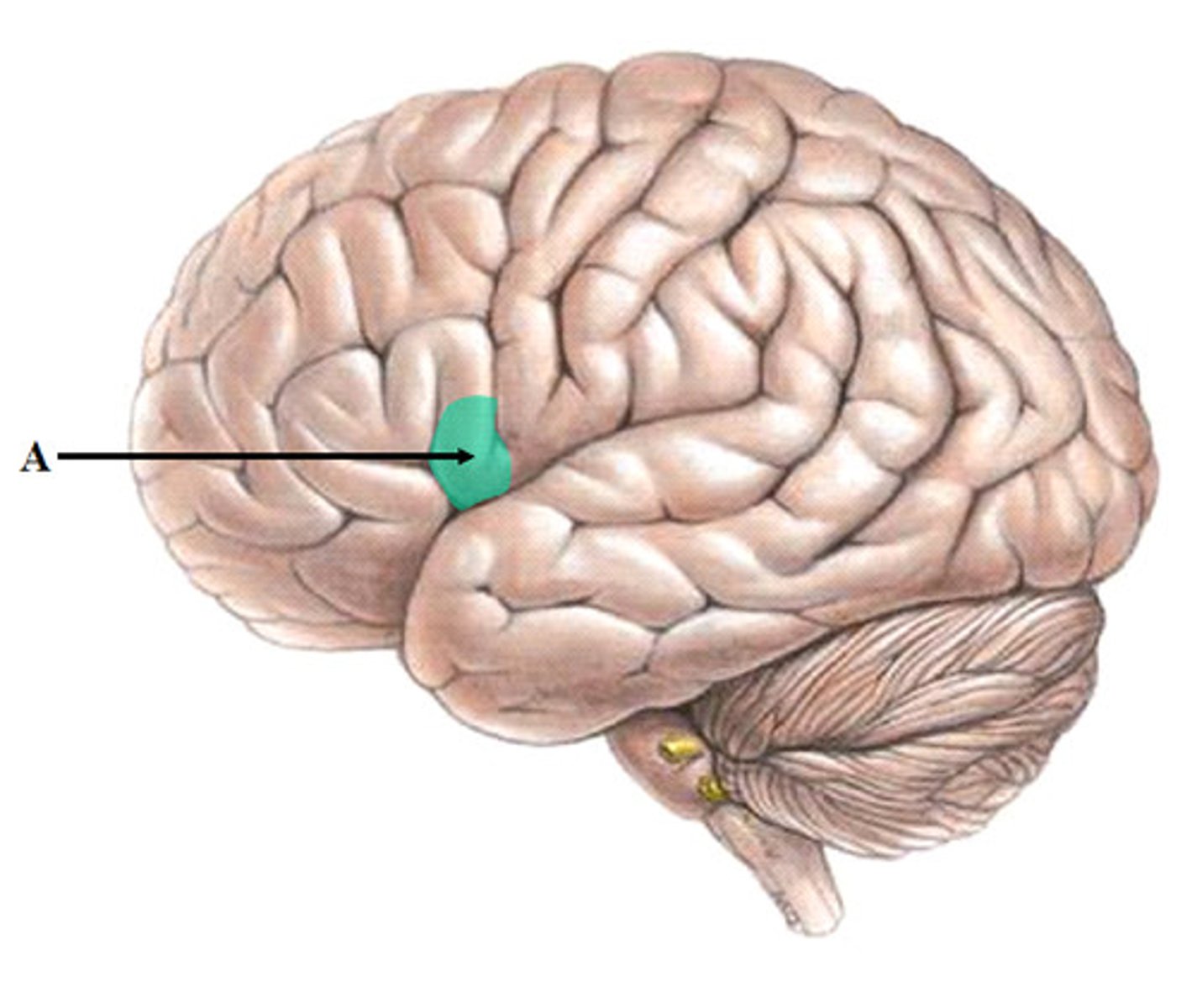
wernicke's area
understanding speech, written language, input system
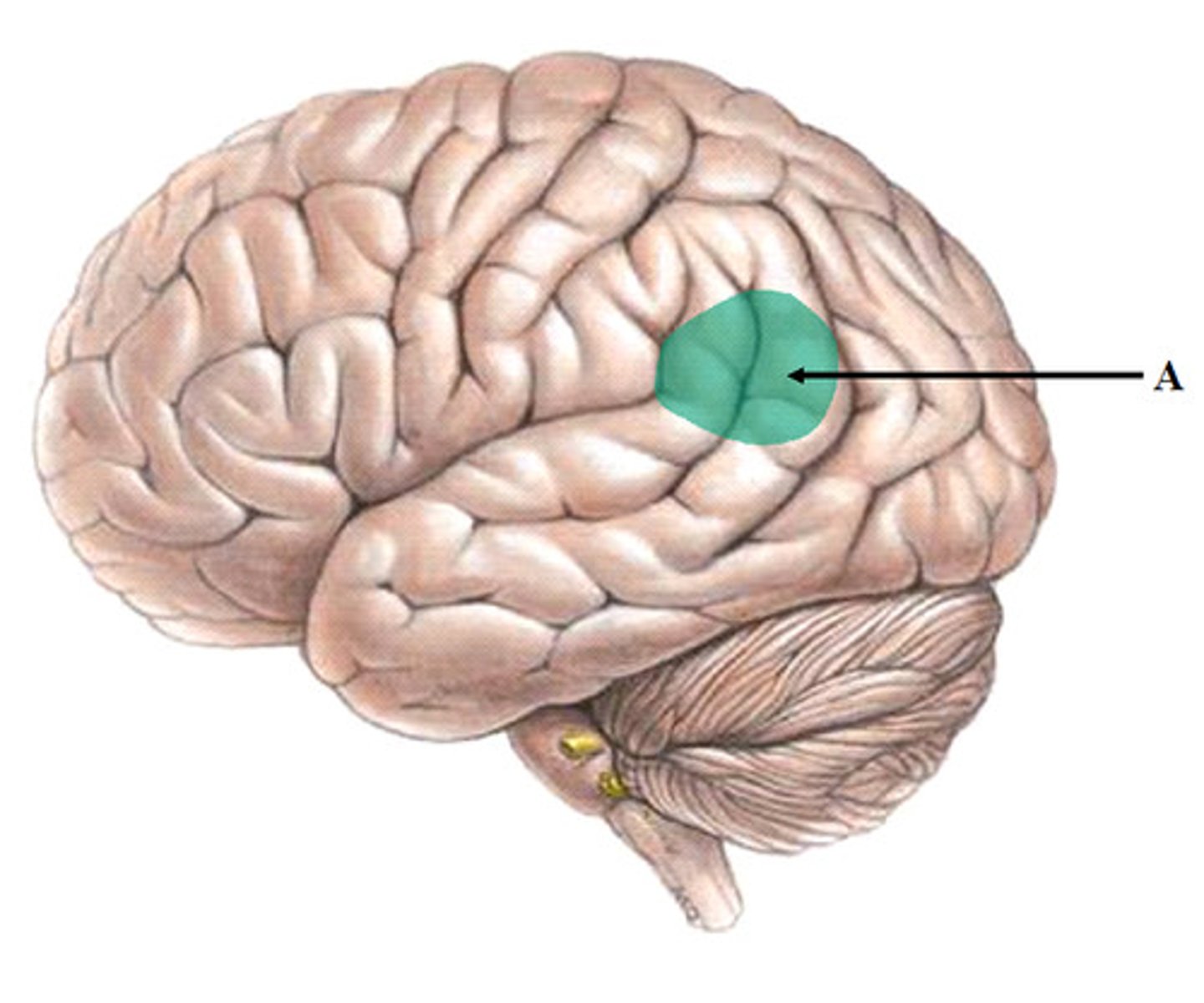
acetylcholine
enables muscle action, learning, and memory
dopamine
influences movement, learning, attention and emotion
serotonin
affects mood, hunger, sleep, and arousal
norepinephrine
helps control alertness and arousal
GABA
a major inhibitory transmitter
glutamate
a major excitatory neurotransmitter; involved in memory